how to draw 3d snakes that look real easy
This tutorial explains how to shade basic 3d shapes such as cubes, spheres, cylinders and cones. These shapes can considered the "edifice blocks" for drawing more circuitous objects.
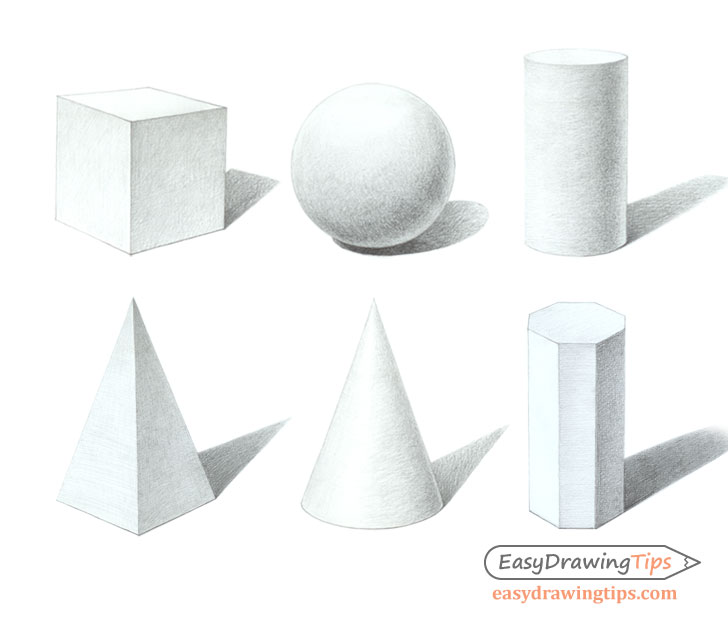
Learning to correctly draw and shade bones three dimensional shapes is very of import for beginner artists.
Delight annotation that in order to keep the tutorial authentic all of the examples were drawn from real life objects. As a outcome this also created some small variations in the lighting conditions between them due to the master light source (the sun) moving through out the mean solar day. This is simply stated and so that you know why some of the lighting is slightly unlike and has no real touch on on the tutorial. All objects however have one main light source coming from the peak left and slightly to the front of them. If yous were to have one of these in front of you in a similar lighting setup then the calorie-free would be coming over your left shoulder.
Before getting started on this tutorial you may also want to learn about unlike types of shading strokes by looking at:
Shading Techniques and Stroke Types Drawing Tutorial
As well delight exist enlightened that different artists may prefer different shading methods. For example some may use simple one directional strokes while the method in this tutorial is to employ the strokes in such a way as to help emphasize the shape of the object.
How to Shade a Cube
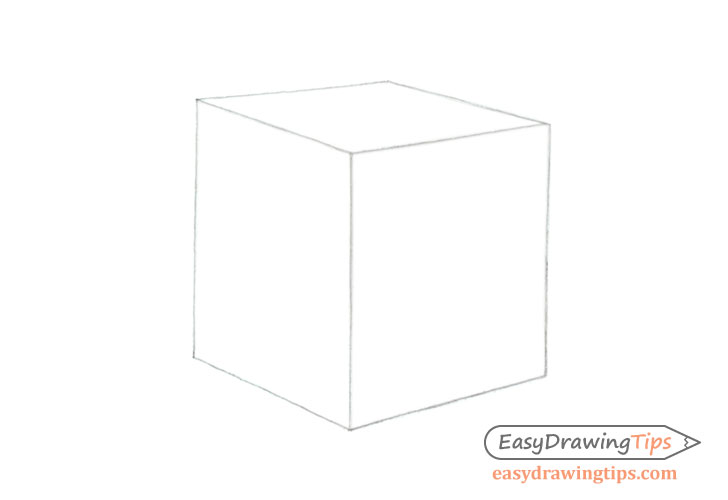
Offset by brand a in perspective light line drawing of the cube. You can see the Perspective Drawing Tutorial for Beginners for an explanation on how to do this.
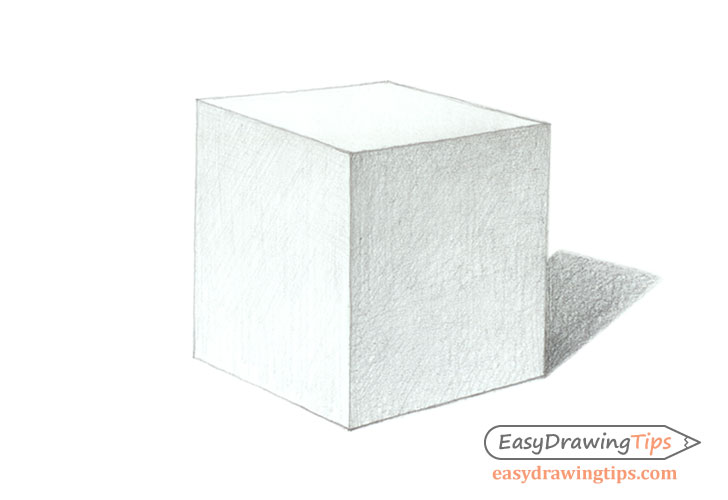
Before applying the shading there are a few things yous should be aware of. I is that generally cubes tend to have a calorie-free, medium, and a dark side. Another is that each side will also tend to have a lite to dark gradient of its own. In the higher up example the top side of the cube is the lightest and the correct side the darkest. The gradients on the left and correct sides of the cube are lighter towards the bottom and darker towards the acme. This is acquired past the reflection of the main light source from the surface that the cube is sitting on.
The cube will also cast a shadow directly opposite the light source. In this case it volition be to the right and slightly behind it. As the principal light source is fairly bright and loftier up above the cube it volition create a well defined short shadow. Because the cube is white the shadow volition also be significantly darker.
For the actual process of shading the cube you lot can use straight crosshatch strokes. For each side commencement make a prepare of strokes parallel to it'south perspective lines and after apply another set of strokes at a dissimilar bending. The first set of strokes will aid reinforce the shape of the cube while the other gear up will help blend the shading making it announced more than natural.
You can utilize a crosshatch for shading the shadow too. Start by making strokes along it'southward general direction and then add a 2nd layer on a slight bending to the first one. Make the shadow darker at the base (near the cube) and lighter as it moves away form information technology. You tin can too make the edges of the shadow more blurry the further away it is from the object.
How to Shade a Sphere
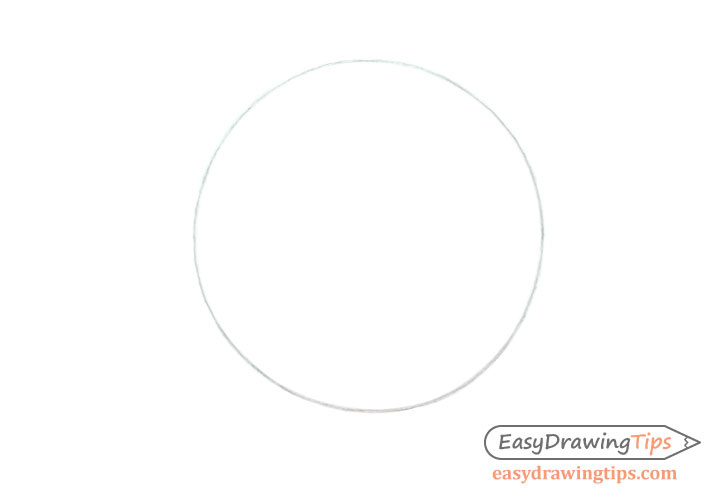
Kickoff the drawing of the sphere by only making a circumvolve.
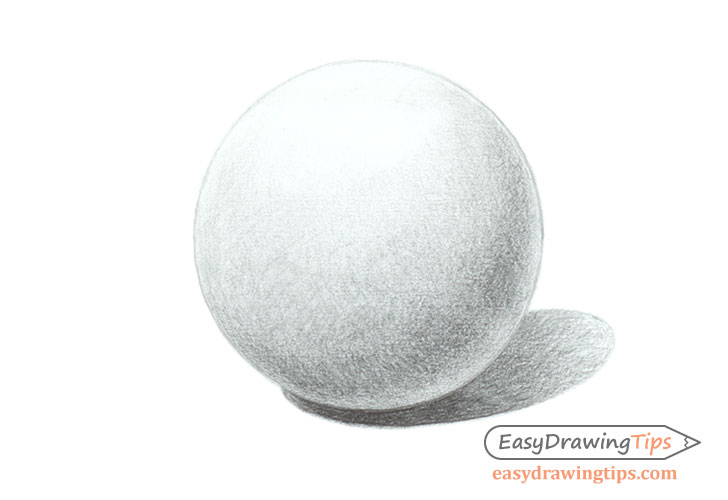
For the "one calorie-free source" basic setup nosotros are using the surface of sphere will gradually transition from it's lightest bespeak (summit left in this case) to dark and so to low-cal again. The second transition will be due to the light reflecting from the surface information technology's resting on. It'due south also important to note that the light expanse created by the reflection volition non exist equally brilliant equally the area lit past the main light source.
The darkest expanse is the point at which the curve of the sphere faces the farthest away from both the main light source and the reflection.
Similar to the previous example the shadow will be cast contrary the main light source (to the right and slightly backside the sphere).
When shading a sphere a good selection may exist to use lightly curved crosshatch strokes as the curves can assist emphasize the spheres round shape. Yous can apply the first ready in any random direction. Apply the second ready on an angle to the first i.
Different the sphere yous tin can use straight crosshatch strokes for the shadow. You can also apply the first gear up in whatever direction y'all like with the second set on a slightly bending in relation to the first 1.
Make the shadow darker towards (right underneath the sphere) and lighter as it moves away from it. You can as well brand information technology's edges more blurry the farther it moves from the object.
How to Shade a Cylinder
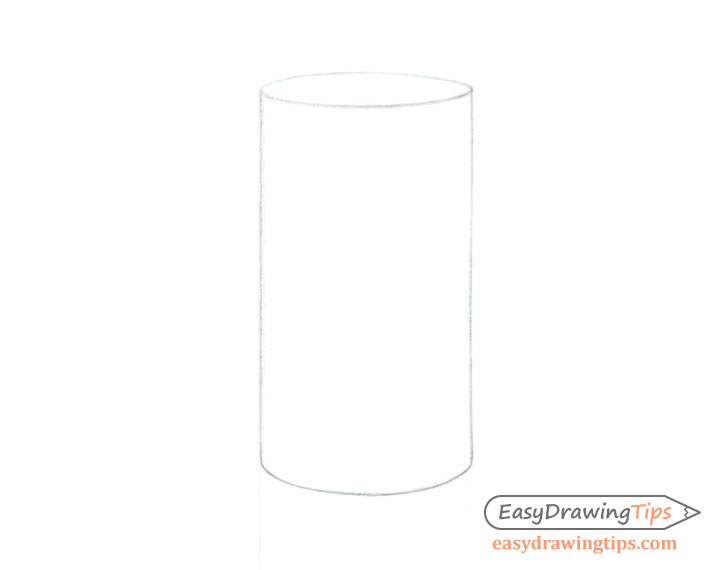
Start by making an in perspective line drawing of the cylinder. You can see the How to Draw Cylinders in Perspective Tutorial for instructions on how to do this.
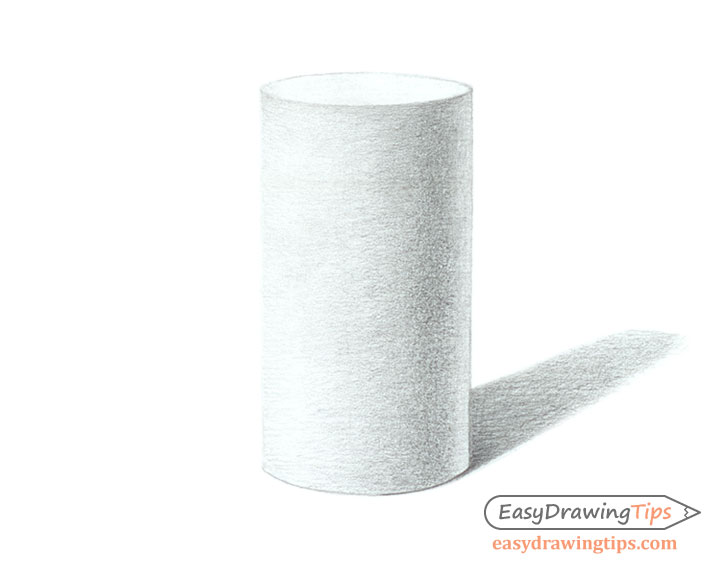
Shading the cylinder will exist somewhat of a combination between the sphere and the cube. In the lighting setup described earlier it will have a light pinnacle with the rest transitioning from calorie-free to night and then to light once again.
As the curve of the cylinder gets farther away from the principal low-cal source it volition get darker. By that it will become lighter again as it curve turns more towards the light reflecting form the surface. The darkest area will once once more (similar the sphere) be the point of the curve farthest from both the main light source and the reflected light.
As the two previous examples the shadow will be cast reverse the main lite source (to the right and slightly behind the cylinder).
You can apply the shading strokes in a curved crosshatch that wraps along the shapes of it's top and lesser curves.
Shade the shadow by making directly crosshatch strokes, darker at it's base of operations and lighter and more blurry as it moves away from the object.
How to Shade a Pyramid
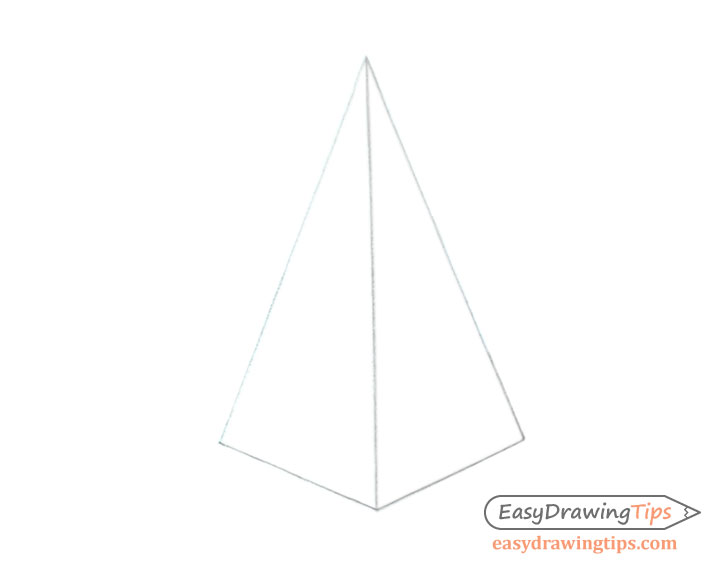
Offset make an in perspective line drawing of the pyramid. For instruction on doing this see:
- How to Draw a Pyramid in Ane Point Perspective
- How to Draw a Pyramid in Two Signal Perspective
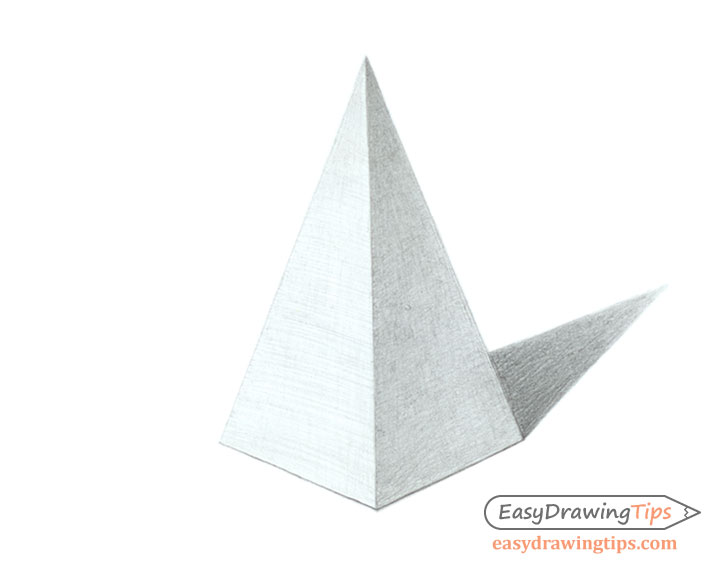
Shading a pyramid cartoon like the ane in this example is fairly simple every bit at that place are only two visible sides. The side facing towards the light will be lighter and the side facing abroad from information technology volition be darker.
Similar to the cube each side of the pyramid will also take it's own light to night transition due to the reflection of the main light source from the surface that its sitting on. In a lighting setup such as that in the above case each side will transition from a lighter bottom to a darker elevation.
Same every bit the other examples the shadow will be pointing directly away from the light source. In this case to the right and slightly behind the objects.
Again like to the cube utilize a two sets of straight strokes to create a crosshatch. Make the beginning sets follow the perspective lines of each side of the pyramid with the second set beingness on a slightly angle to them.
Make the shadow darker at the base and lighter and more blurry toward the tip.
How to Shade a Cone
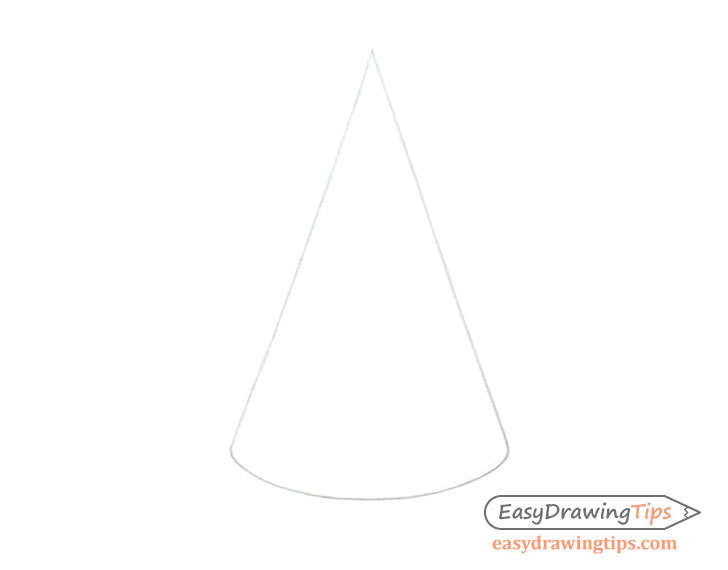
Make a perspective cartoon of the cone. For educational activity on doing this see the How to Describe a Cone in Perspective tutorial.
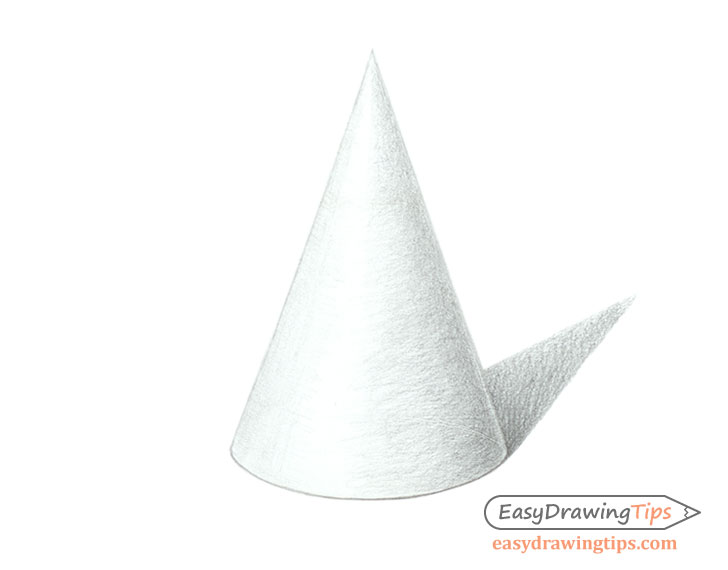
As mentioned earlier the lighting weather for this detail instance are slightly different in that the main light source will be a little more in front of it than in the other examples. This will move the lightest expanse of the cone slightly more towards information technology's heart and create a slope on its left going from left to night. The right side of the cone will transition from light to night and so to light again (from the reflected lite).
The shadow will again be pointing to the right and slightly behind the object (a niggling more than to the dorsum in this example).
Shading the cone is very similar to shading a cylinder the but difference is that everything will become narrower as it goes towards the pinnacle. Just like the cylinder you can shade information technology with a curved crosshatch strokes. Brand the first set up with curves somewhat matching the curve of it's bottom and the second gear up on a slight bending in comparison.
The shadow will be pretty much the same as that of the pyramid. Shade it with straight crosshatch strokes darker towards the base and lighter and blurrier towards the tip.
How to Shade an Octagonal Prism
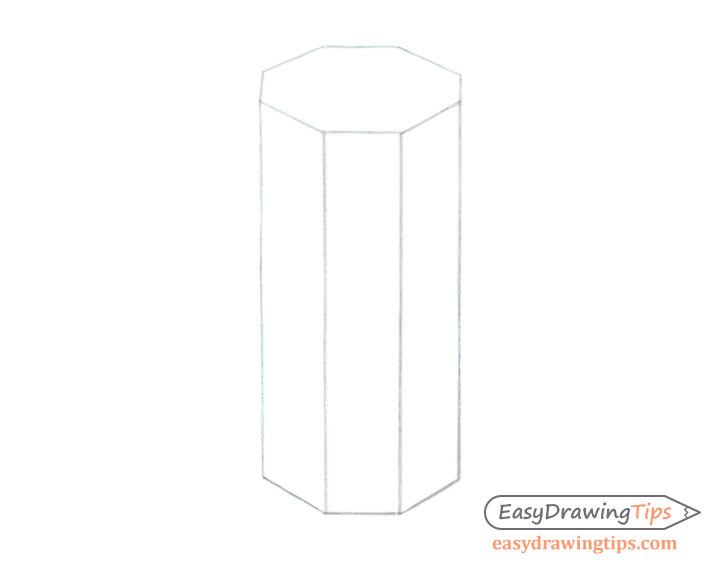
Start past making a light line drawing of the octagon prism. To practise this you can offset depict a rectangular prism and and so "trim" it's sides to get the octagon. You can again run into the Perspective Drawing Tutorial for Beginners for assist.
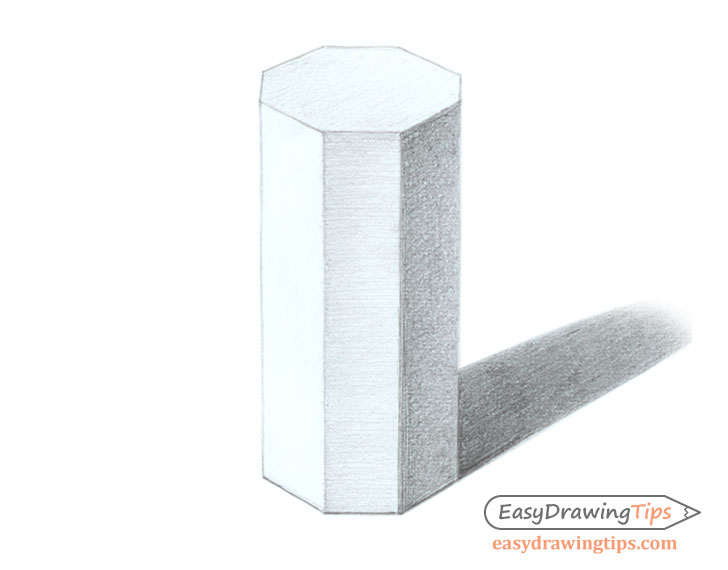
In the lighting conditions described earlier the lightest side of the octagon prism will exist on the left and the darkest on the correct. The left side in this instance is facing nigh straight towards the master light source and therefore is brilliant plenty that information technology does not really need whatever shading.
Same as the other examples the other sides of the prism will have their own light to dark gradients. The lite reflecting form the surface will again make these gradients lighter towards the bottom and darker towards the pinnacle.
The shadow volition be cast opposite the primary light source (directly reverse the left department) to the right and backside the prism.
As the sides of the prism are fairly narrow you lot tin can utilize a unmarried set of one directional strokes or a crosshatch for shading them. In this example the middle section is done with ane directional strokes while the darker right side is done with a crosshatch.
Shade the shadow using crosshatch strokes with the first set up along its full general direction and the 2d set angled in relation to that ane.
For shading another similar object you tin can also see:
How to Depict a Realistic Banana Tutorial
Conclusion
These 3d shapes are the basic edifice blocks of many more complex objects. Learning to properly draw and shade them can make it much easier to move on to drawing things that are more complex.
For more similar tutorials also come across:
- Egg Step by Pace Bones Shading Tutorial
- How to Draw a Realistic Pear Tutorial
blaineyoubtand1944.blogspot.com
Source: https://www.easydrawingtips.com/shading-basic-3d-shape-drawings-tutorial/
Post a Comment for "how to draw 3d snakes that look real easy"